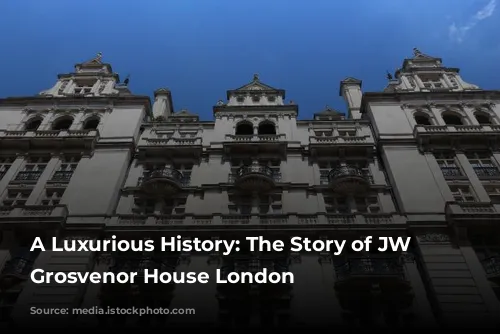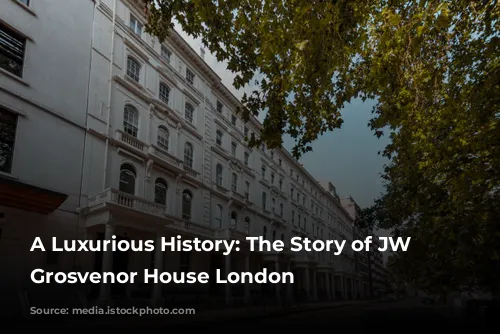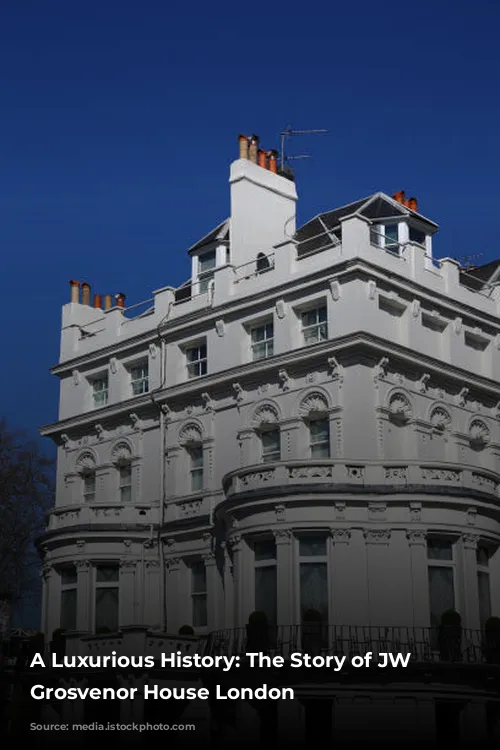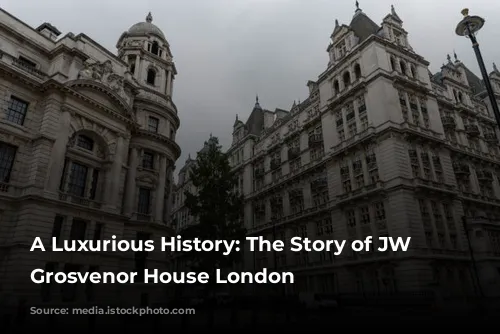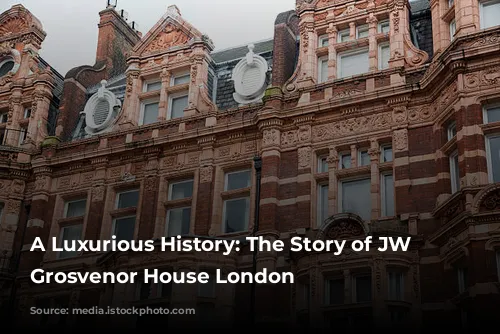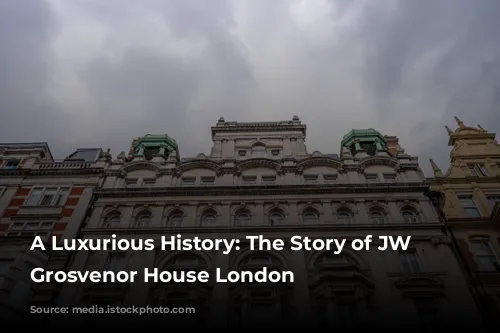JW Marriott Grosvenor House London, formerly known as the Grosvenor House Hotel, is a luxurious hotel that stands tall in the heart of London’s prestigious Mayfair district. Its story stretches back to 1929, a time of grandeur and elegance, when the hotel first opened its doors. Situated opposite the sprawling expanse of Hyde Park, the hotel occupies the land once graced by the 19th-century aristocratic Grosvenor House residence. Today, the hotel is managed by JW Marriott Hotels, a division of Marriott International, and its ownership rests with Katara Hospitality.
A Visionary Beginning
The Grosvenor House Hotel was born from the ambition of Arthur Octavius Edwards. In the 1920s, he conceived and built the hotel on the grounds of the former London home of the Dukes of Westminster, a family whose surname, Grosvenor, is etched in the hotel’s name. Edwards, a visionary leader, served as the hotel’s chairman for a decade, overseeing its early years.
A Dedicated Manager: A.H. Jones
A.H. Jones, a dedicated individual who had worked for Edwards in Doncaster, became an integral part of Grosvenor House’s story. In 1929, he was brought on board as an accountant, just months after the hotel’s completion. Jones’s dedication and leadership qualities quickly earned him recognition, and in 1936, at the young age of 29, he was promoted to the position of general manager. He dedicated himself to the hotel, managing it until his retirement in 1965, with a brief interruption during World War II when he served his country.
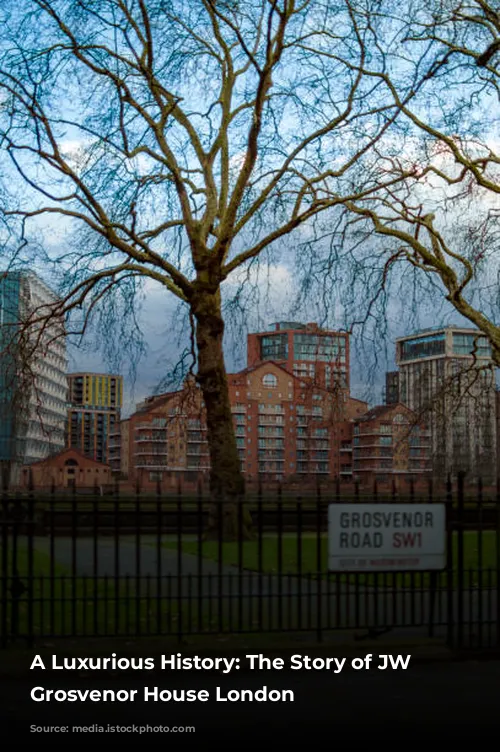
A Legacy of Aviation and Wartime Service
Grosvenor House’s fame extended beyond the realm of hospitality. Edwards, a passionate aviator, named his de Havilland DH.88 Comet racer after the hotel. This racing plane, a marvel of engineering, soared to victory in the MacRobertson England-Australia Air Race in 1934. Today, the restored aircraft continues to grace the skies, a testament to Edwards’s daring spirit.
During the tumultuous years of World War II, Grosvenor House proved to be a vital asset. The hotel’s vast spaces were utilized for the war effort, providing accommodation and entertainment for servicemen. Its Great Room transformed into a hub of activity, first hosting the Officers’ Sunday Club and later serving as a mess for US officers. The hotel saw high-ranking military figures such as Generals Dwight D. Eisenhower and George S. Patton walk its halls.
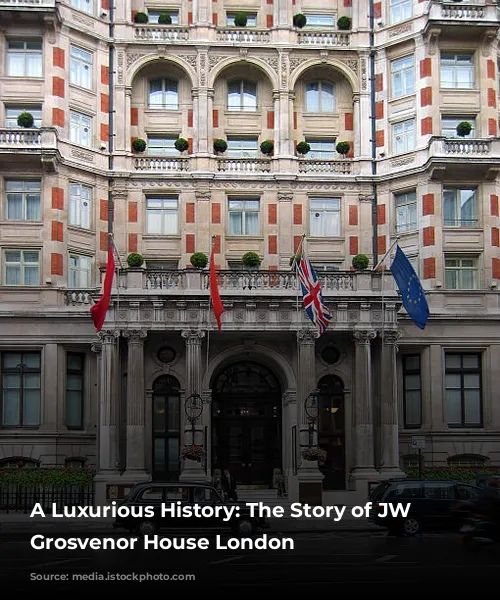
A Continuously Evolving Landmark
The hotel’s original vision took shape over time, with a significant expansion in the 1950s. After a legal hurdle involving the lease of 35, Park Street, permission was finally granted to demolish the existing building and construct a 92-bedroom extension, which was officially opened in 1957.
Grosvenor House has undergone several transformations over the years, showcasing its commitment to providing the highest standard of luxury. In 2008, the hotel completed a comprehensive four-year renovation and restoration project costing £142 million. This extensive refurbishment encompassed every aspect of the hotel, from guest rooms and restaurants to health facilities and public areas. The result was a revitalized hotel with a stunning Great Room, Ballroom, Court Suite, and a host of other amenities.
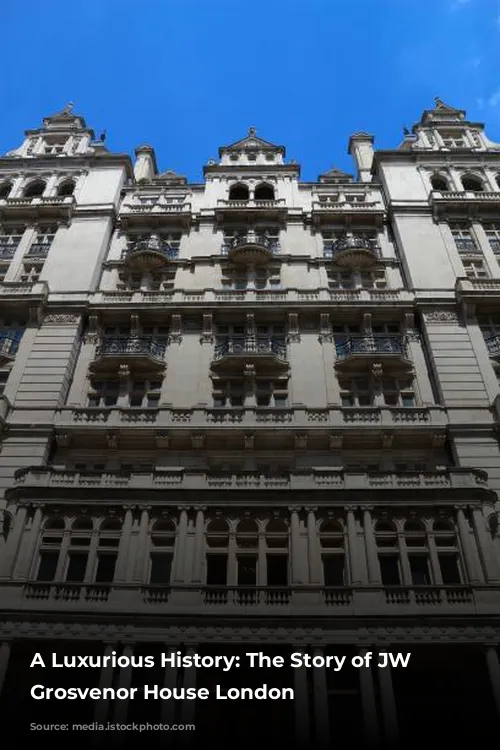
A Global Presence and Controversies
The hotel has witnessed changes in ownership throughout its history. In 2010, Sahara India Pariwar, an Indian conglomerate, acquired Grosvenor House for £470 million. In 2017, the ownership shifted to Ashkenazy Acquisition Corporation, a US-based company, after Sahara India Pariwar declined a £600 million offer from British billionaires David and Frederick Barclay. The hotel’s current owner is Katara Hospitality, a Qatari entity.
Grosvenor House’s global presence has brought both recognition and controversy. In 2017, the hotel drew protests when it hosted the annual gathering of the Aerospace Defence Security group (ADS), a trade association representing arms companies. Critics argued against the involvement of some ADS member companies in the arming of Saudi Arabia during its attack on Yemen.
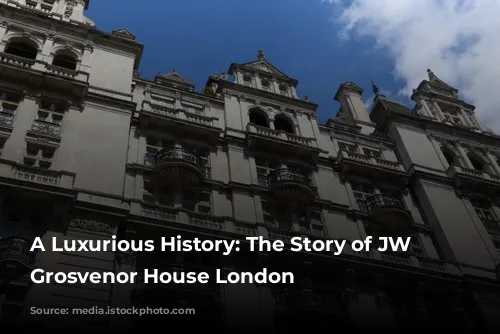
A Blend of Luxury and History
Grosvenor House has been a pioneer in luxury hotel amenities. It was the first hotel in London to offer separate bathrooms and entrance lobbies for each bedroom, as well as running iced water in every bathroom. The hotel has a rich history, having once served as the headquarters of the International Sportsmen’s Club and boasting facilities such as Turkish baths, a swimming pool, squash courts, and a gymnasium.
The Great Room at Grosvenor House is a venue of exceptional significance, hosting prominent events such as the Asian Awards, Pride of Britain Awards, and the O2 Silver Clef Awards. It has played host to charity balls and other events, and is frequently featured on British television. The Royal Caledonian Ball, the world’s oldest charitable ball, has been held in the Great Room since the 1930s.
The Great Room has a fascinating past, originally conceived as an ice rink. Princess Elizabeth, the future Queen Elizabeth II, learned to skate at the hotel at the tender age of seven. The rink saw renowned skaters like Sonja Henie and Cecilia Colledge grace its ice, along with international ice hockey matches. The room underwent a transformation in 1935, becoming a banquet hall.
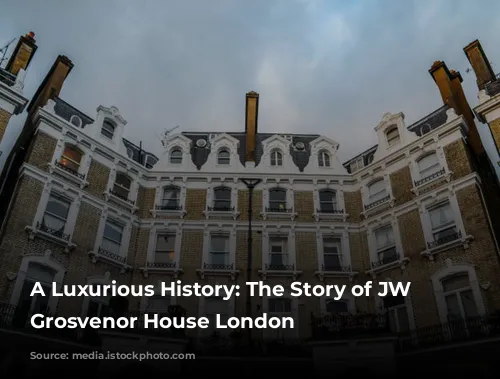
A Lasting Legacy
JW Marriott Grosvenor House London stands as a testament to luxury, history, and enduring legacy. From its humble beginnings in 1929, the hotel has become an iconic landmark, evolving with the times while retaining its timeless charm. Its rich history, diverse clientele, and stunning spaces continue to attract visitors from around the world, ensuring its place as one of London’s most prestigious hotels.
